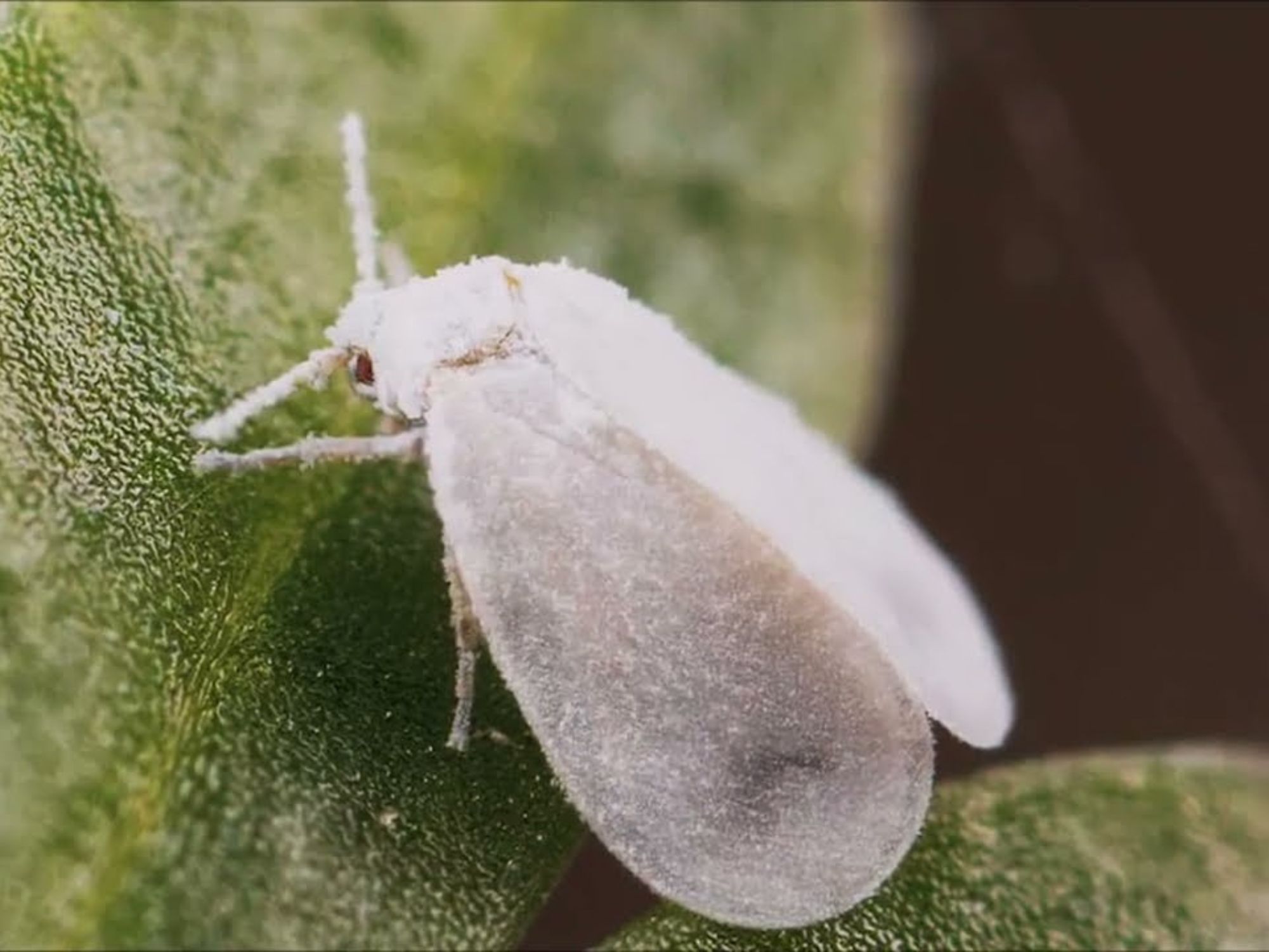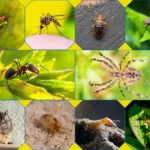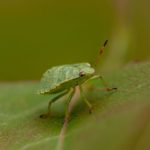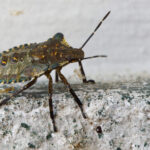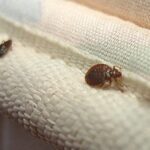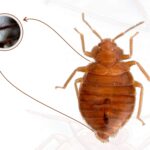There are many kinds of bugs in our world, varying in size. Whether these little white bugs are dangerous or not depends entirely on their nature. As we have already mentioned, not all bugs are apparent; thus, occasionally, we cannot distinguish them from other objects.
We, humans, do not have super eyesight and might not be as strong as we believe, so we sometimes struggle to distinguish between little white bugs and lint and dust. Unlike dust and lint, these creatures will live and prosper, endangering humans. Some white bugs might lead to allergic reactions and other respiratory problems.
Our homes are where we live in tranquility, free from all bad energies. Moreover, if we find bugs in our houses, we will hate them, which could be much worse if we cannot tell what kind they are. As we are all aware, several varieties of tiny white bugs look like lint, so we also need to know how to get rid of them. Everybody’s home has these kinds of pests. Knowing which bugs pose a risk to you and your home is essential. However, in this post, we will talk about 5 little white bugs that look like lint, how to identify them, and easy ways to get rid of them.
Identification
Identifying bugs is easy and difficult, but little white bugs are difficult to distinguish since many resemble one another, and some are even translucent. However, these tiny white bugs can be recognized by their features, habitat, and behavior.

It is vital to keep in mind that not all little white bugs that invade houses are considered harmless. Many of them present health dangers, and appropriately identifying them is crucial.
These little white insects that look like lint might be found on your clothing or in your house. Due to their small size and appearance, they are mistaken for lint, and these bugs can occasionally be challenging to spot. Some little white bugs cause allergies, while others feed on other household things like books or plants.
Types of Little White Bugs
- Wooly Aphids
- Mealy Bugs
- Dust Mites
- Cloth moths
- White Flies

No, what you see is not cotton or snow, but rather bugs. If you have recently observed white fuzz resembling lint on your trees and leaves, these are white bugs known as wooly aphids. Asian woolly hackberry Aphids is the full name of these white, fluffy bugs, which mainly emerge in Asia and the Upper South of the United States. Despite being harmless to people, homeowners dislike them because of the sticky sap they emit wherever they go.
Aphids come in more than 4000 different species, and they are widespread. One of the aphids’ species is wooly aphids which are tiny white bugs that resemble lint. These bugs can have either long or short antennas and they range in size from under a millimeter to over a centimeter. Aphids typically lack wings, but if their population becomes very dense, they can develop wings. Although Aphids can also be brown, black, white, or pink, but are often green.
Aphids of all kinds have long, sharp mouth-parts, and with their help, aphids pierce plants to extract the sap for consumption. In return, they leave the plant to wither, reducing the development and yellowing of the leaves. Additionally, aphids secrete a sticky material called honeydew that may draw in other insects.
Are Wooly Aphids Harmful
Wooly aphids are little white bugs that look like lint, are completely harmless to people and animals, and won’t bite. They don’t have fangs or stingers to sting or bite but just needle-like mouthpieces for sucking plant sap.

Wooly Aphids may look tiny, but these monsters can spread disease in plants. Numerous diseases that may harm different plants, especially big trees like apple and balsam pine, are carried by woolly aphids. However, they do not transmit illnesses to humans or pets.
Wooly aphids are some significant type of plant pests, although they are not dangerous to people or animals.
How to Get Rid of Wooly Aphids
Getting rid of White Aphids is not a big deal. There are a few easy solutions you can use to get rid of them from your garden.
- Use a neem oil solution to get rid of any kind of white aphid from your indoor plants.
- Use pesticides on the affected plant.
- Natural predators, such as ladybugs or lacewings, can also help in getting rid of white aphids.
- Prune the affected plant.

Mealybugs can be found on indoor and outdoor vegetation and surfaces. They are the common little white bugs that look like lint. They have fuzzy bodies and legs. Mealybugs seem like tufts of cotton and also cluster together like woolly aphids. Their skin cells secrete a white powdered covering that gives them their oval form. They appear like dust or lint because of this. These bugs thrive in colonies when they attack plants.
Mealybugs consume plant sap and cause severe infestation, which causes plant death. Additionally, their excrement may encourage plants to produce mold. These bugs are resistant to pesticides thanks to a waxy covering on their bodies. They are around one-fifth of an inch in size.
You can be putting yourself at risk for these little white bugs if you have multiple indoor plants, as they may sometimes be mistaken as lint or dust. Mealybugs are often found in outdoor or indoor plants. They mostly attack citrus trees, grapes, and perennial plants, which include fuchsia, gardenia, and hibiscus. These tiny, white, oval-shaped insects are exceedingly tiny. They excrete a wax-like material that is sticky. Mealybugs have several natural predators that restrict their population growth in the wild. To be on the safe side, inspect and ensure that all of your garden’s plants are bug-free before moving them.
Are Mealy Bugs Harmful?
Mealybugs are non-biting. All they do is hurt your plants. These little white bugs that look like lint do not harm people or animals.
Although mealybugs aren’t often carriers for the propagation of leaf roll viruses, those that infest vineyards could be. They do not spread any disease among plants. There are also no known human diseases that they spread.
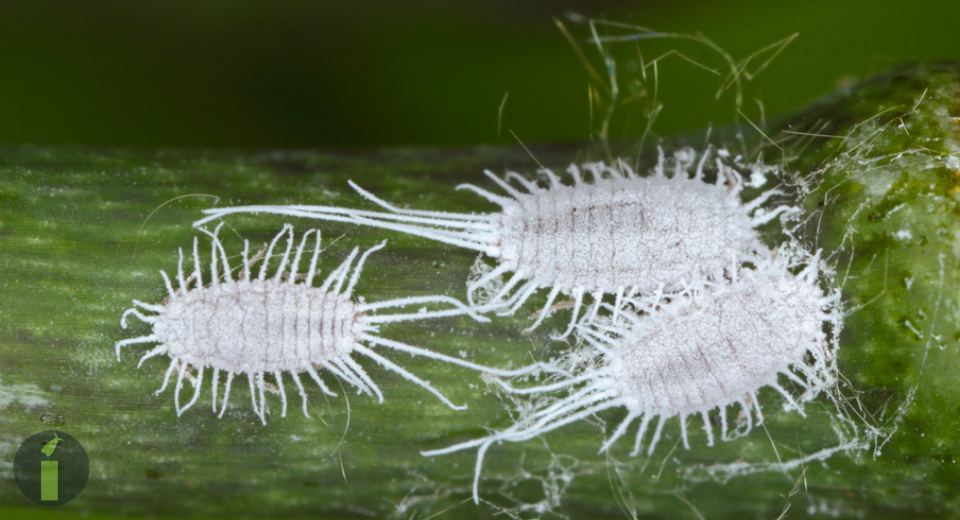
How to Get Rid Of Mealy Bugs
- Use insecticides.
- Spray soapy water to repel mealybugs.
- Use neem oil on affected plants.
- Natural predators like ladybugs and dragonflies are helpful to get rid of mealy bugs.
Dust mites are tiny bugs resembling white lint and are among the tiniest mites that cannot be seen with the naked eye. They grow in soft furniture throughout your house. To prevent a dust mite infestation, frequently clean your mattresses, couches, carpets, and rugs.
These bugs live on the skin of any living being and feed on his dead skin cells. People are at risk from dust mites because they can spread respiratory infections, especially if their infestation becomes out of control. Dust mites can be located in beds, couches, rugs, carpets, and other furniture in the house.
People should be aware of dust mites and how they appear is crucial because they quickly and widely spread throughout the entire home. Additionally, dust mite excrement on the skin can cause allergies and asthma problems.
Are Dust Mites Harmful
If you are allergic to dust mites, then you are not alone in this. In the US, dust mite allergies are the most prevalent. Dust mite allergies impact approximately 20 million individuals.

Dust mites do bite, although they are microscopic bugs. Their bites typically appear as tiny, crimson pimples on the skin, just like mosquito bites. They could make someone feel as though they’ve been bitten by a mosquito or another bug and can be itchy. Dust mite bites might occasionally cause an allergic response as well.
Symptoms of dust mite allergies might include sneezing, runny nose, congestion, itchy eyes, and skin rashes. In extreme circumstances, they may potentially precipitate asthma episodes.
According to statistics, 10% of the world’s population has an allergy to dust mites, but in some areas, the number of persons with allergic asthma who are sensitized to them might reach 90%.
How to Get Rid Of Dust Mites
- Dust and vacuum your home regularly
- Steam Cleaning Is Effective in Killing Dust Mites
- Wash bedding in hot water.
- Reduce the humidity in your house since dust mites prefer damp conditions.
Cloth moths are another perfect example of little white bugs that look like lint. These small, white pests can destroy clothing materials, including silk, wool, leather, and linen. The little white bugs that look like lint have a wingspan that ranges from 0.3 to 0.6 inches. The clothing moth’s wings are described as grayish-white, while its body is a light tan tint.
There are many different types of moths in this world, but the clothes moth is one in particular that creates problems in houses. The length and color of clothing moths are roughly 3/8 of an inch. The whitish Larvae of the clothes moth consume natural fabrics, such as pure wool and cashmere. These moths may quickly ruin your clothing if they get into your closet. These white bugs are often taken as lint. They do such significant harm that they are regarded as a major pest.
Cloth moths destroy clothes as well as furniture. They and their white larvae frequently infest upholstered furniture. However, these little white lint-like monsters can be found in isolated and dark places like basements or attics of your house. If you have holes in sweaters, scarves, blankets, and bed sheets then this might be the first indication of a clothing moth infestation.
Are Clothing Mites Harmful?
Clothe moths are not thought to be harmful to humans or animals. These moths don’t sting or bite, and neither they contaminate food items. Clothe moths, however, are thought to be harmful only to human property. The biggest harm is done to textiles (fabrics) during their larval growth stage.

How to Get Rid Of Cloth Moths
- Store clothing and bed linen in tightly fitted plastic bags or containers to reduce the risk of clothes moths invading them.
- Use moth repellent
- Vacuum and clean your house daily
- Use natural Moth killer spray.
Small, winged whiteflies are relatives of mealybugs and aphids. They are another example of little white bugs that look like lint. Plants are infested and harmed by these whiteflies, which makes them pests. Whiteflies are simple to distinguish due to their moth-like form, although they resemble lint.
They consume plant sap and cause yellowing and wilting of the leaves. These whiteflies can also carry plant diseases. Additionally, whiteflies exude honeydew which draws ants and other insects that might further harm the plant.
Whiteflies may be identified by their wings, which are joined to their tiny, rectangular, white body. During hot summer weather, these little white bugs are most active; you can notice them fluttering over plants and vegetables.
Are white flies harmful?
Most flies don’t bite, or sting but these white flies not only bite but attack frequently, and their bites hurt far more than those of mosquito bites. Your skin may get itchy and red for one or two days.
As for viruses, these white flies can also spread viruses among plants. They carry numerous viruses that harm plants and vegetable crops. However, Whitefly bites hurt both people and animals and can cause allergic responses.
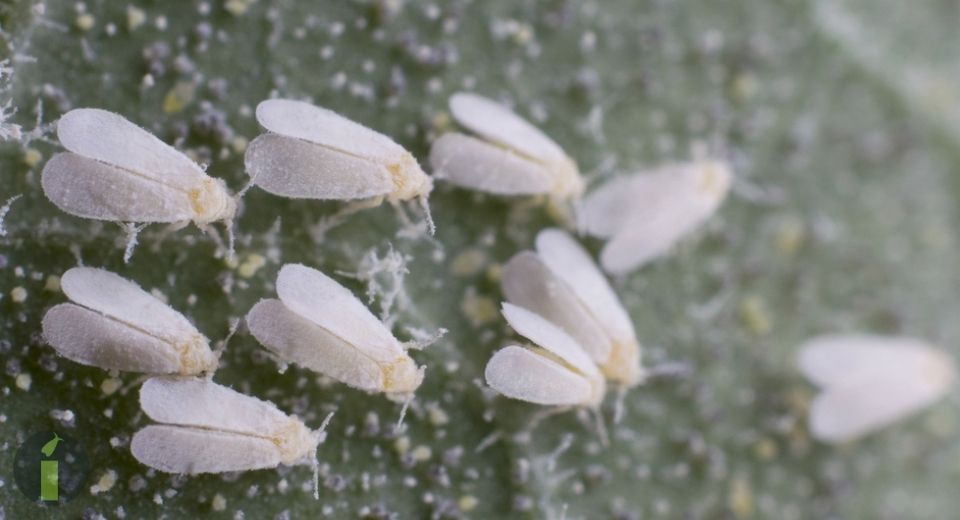
How to get rid of white flies
- Spray some soapy water onto the leaves of the diseased plant.
- Prune the impacted plants from your farm or garden.
- Burn the affected plant.
- Spray a pesticide on your plants.
- Whiteflies can be caught using traps.
Conclusion
You could be misled by lint when it’s small white bugs that look like lint. This article lists five types of tiny white bugs that may be found on your skin, clothing, furniture, and in the garden and also explains how to get rid of them and identify them.
Moreover, don’t be too upset over these white bugs because the majority won’t pose harm to you or your home, but they may harm your garden. Most of these bugs may be avoided by keeping your house clean and at the right humidity level.

